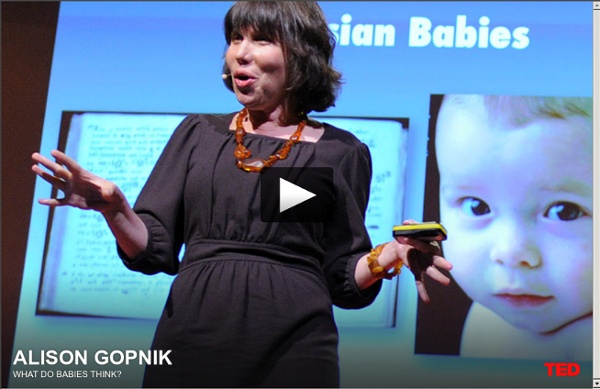



http://www.ted.com/talks/alison_gopnik_what_do_babies_think.html
Edge.org The Epidemic of Obesity, Diabetes and "Metabolic Syndrome:" Cell Energy Adaptations in a Toxic World? "Metabolic syndrome" (MetSyn) has been termed the "Epidemic of the 21st century." MetSyn is an accretion of symptoms, including high body mass index (weight-for-height), high blood sugar, high blood pressure (BP), high blood triglycerides, high waist circumference (central/visceral fat deposition), and/or reduced HDL-cholesterol, the so-called "good" cholesterol. Epidemics of Obesity and diabetes are intertwined with, and accompany, the meteoric rise in MetSyn. The prevalent view is that MetSyn is due to a glut of food calories ("energy") consumed, and a dearth of exercise energy expended, spurring weight gain—an "energy surfeit"—with the other features arising in consequence. After all, we have more access to calories, and are more often sedentary, than in times gone by.
Weekly Wisdom Tuesday, August 27, 2013 Tami Simon speaks with Dr. Ashok Gangadean, who has been a professor of philosophy at Haverford College for more than 45 years. Ashok investigates the primal internal logic of human reason and the deep dynamics of communication between diverse worldviews. He is the author of Meditative Reason and Between Worlds, and with Sounds True has created the six-session audio course Awakening the Global Mind.
VIDEO: Ohio Congressman Tim Ryan talks "A Mindful Nation" "Now's the time for us to implement this." It isn't every day that we hear a U.S. congressman talking about mindfulness, much less in these terms: "I felt like I would be derelict in my duty as a member of the United States Congress if I didn't try to push this stuff out into society. We've got a responsibility, when we get sworn in to be a member of congress, to try and help our constituents and help our country. [...] Our country's going through too much right now. BBC News - Malala Yousafzai speech in full Exclusive Diane Ravitch Interview on No Child Left Behind Dr. H.B.Danesh at the WPA - The Arab Spring: A psychosocial developmental perspective Peter McLaren - Critical Pedagogy, Social Justice and the Struggle for Peace - 1/6